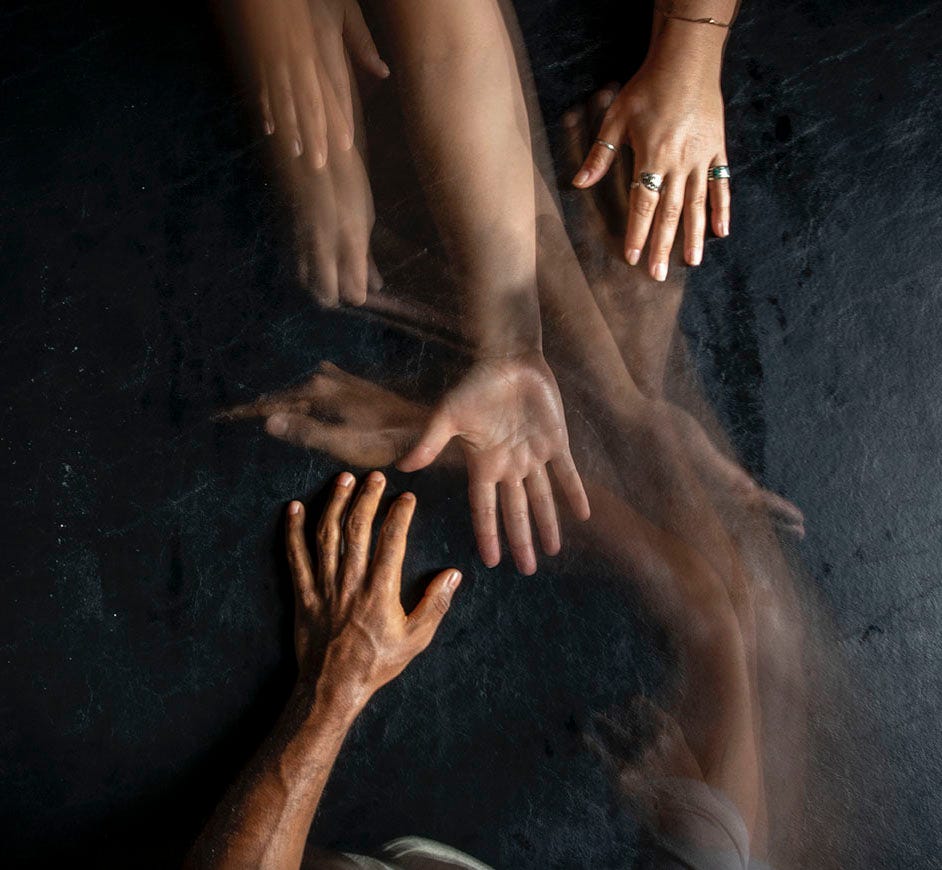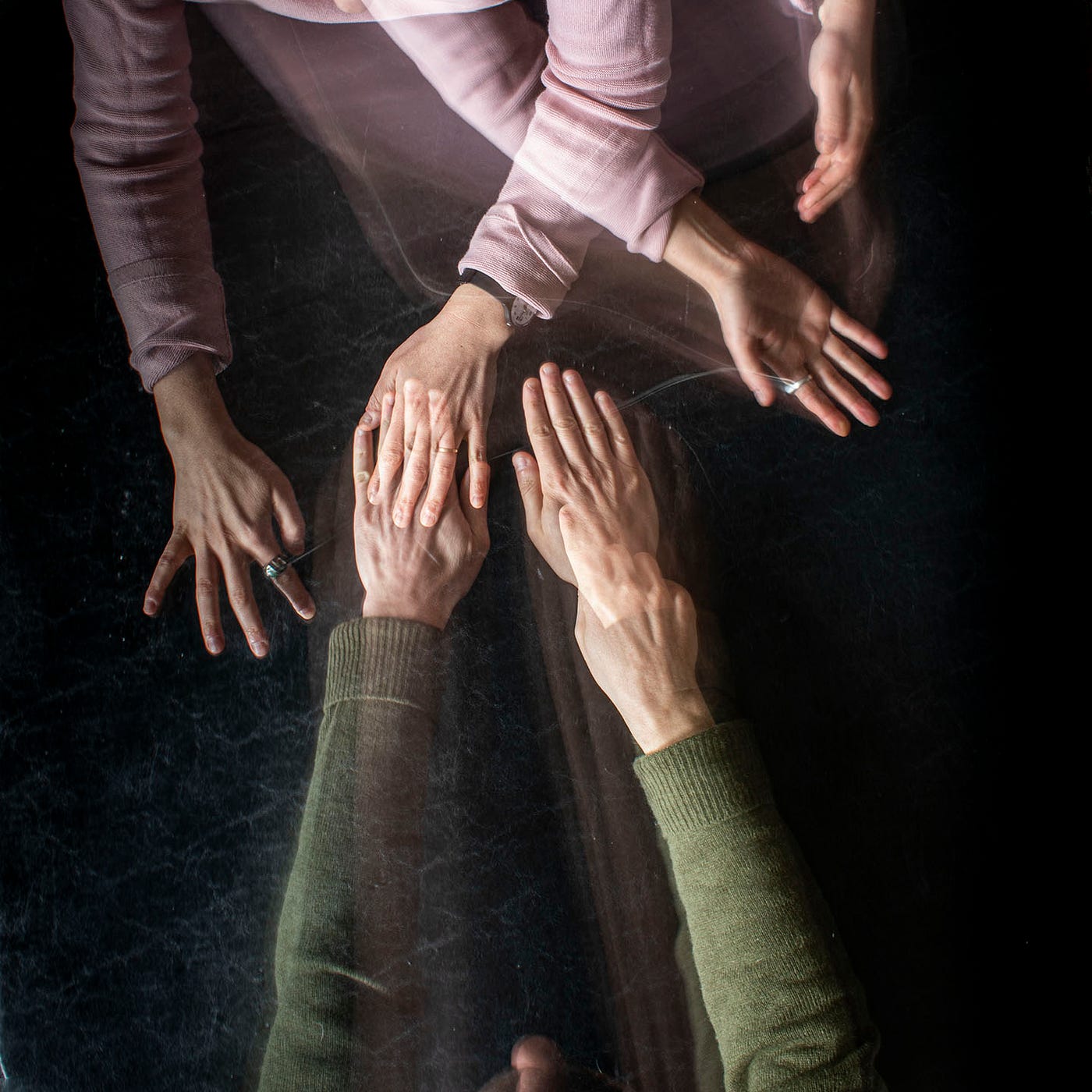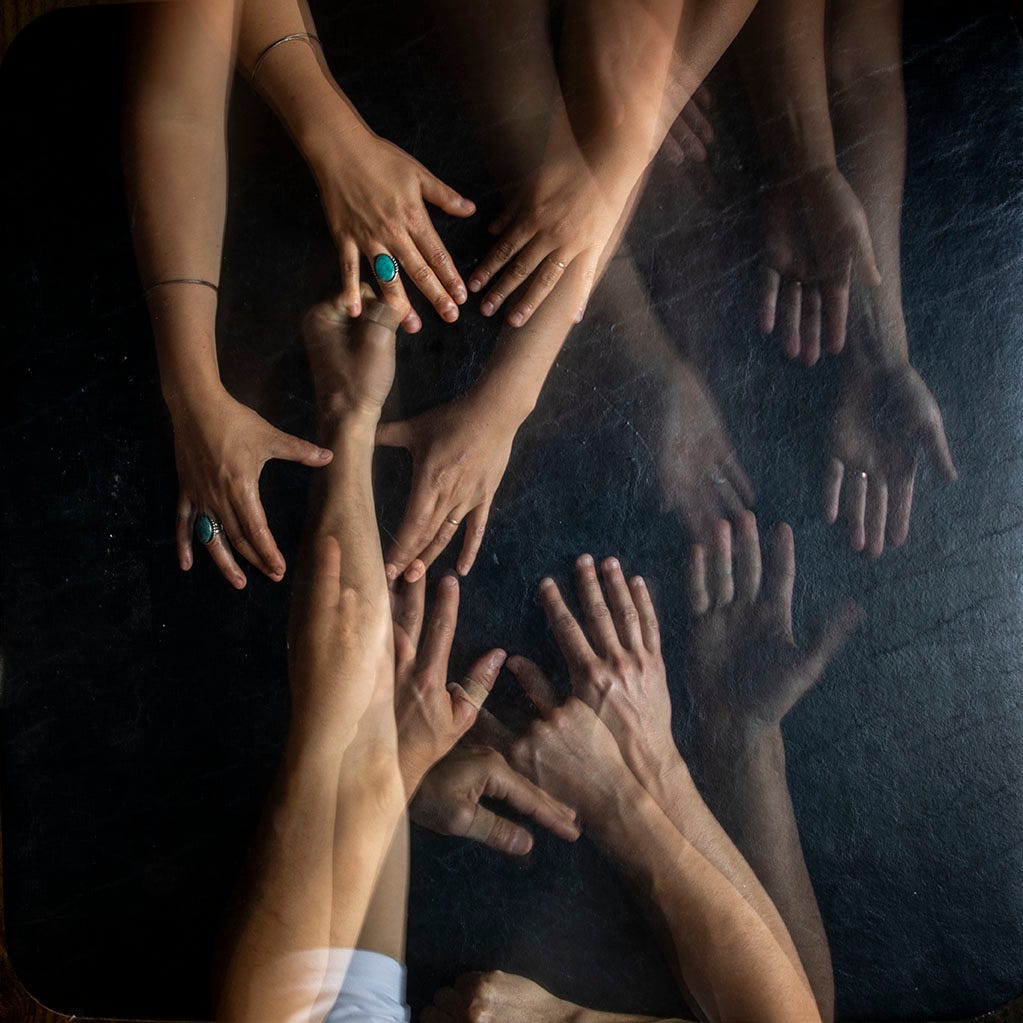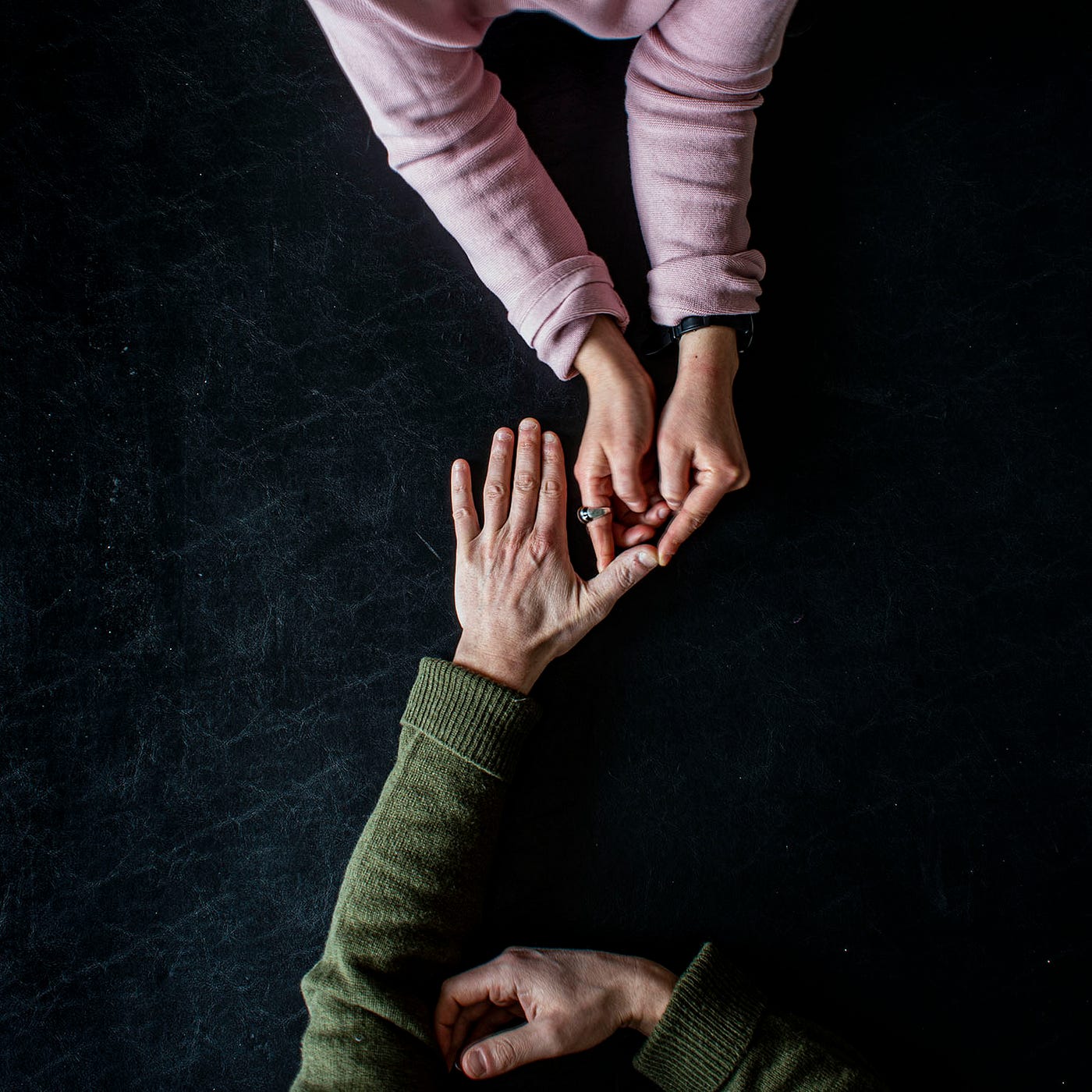What Happens When the Mirror Stares Back: ‘A Thousand Ways (Part 1)’ (Review)
600 Highwaymen connects strangers via intimate telephone conversations


Sometimes a show hands us a mirror and waits until we’re ready to examine the blurry borders between ourselves and others. A Thousand Ways (Part 1) offers us a mirror that shifts from one-way to plexiglass and back over the course of 60 minutes.
(Minor spoilers follow.)
“This might feel like a conversation,” says the digitized voice in my ear. “It is not.” The voice is pleasant but affectless. It hasn’t asked me to respond, so I let the statement hang. Whoever’s on the line with me breathes quietly; we listen to each other shift in our seats and the voice moves on. “A. A. Have you ever been to Philadelphia?” I’m “A.” I answer, “yes.” My partner, “B,” waits for whatever comes next.
A Thousand Ways (Part 1) is a phone call between two people, facilitated by a voice that I’m 90% sure is recorded. “She” (the voice’s gender was one of several details my subconscious filled in during the show) never told us who “she” was or why she was there. She simply told us what to do, one step at a time, and we did it.

Looking back, this feels like a great setup for a dystopian game of escalation. But that’s not what 600 Highwaymen is about. Artists Abigail Browde and Michael Silverstone have been “creating intimacy amongst strangers” together as 600 Highwaymen since 2009. This latest exploration of human connection debuted at La Jolla Playhouse’s Digital WOW festival in January 2021 and can be enjoyed by anyone with a charged phone, good cell service, and a little privacy.
Here’s how it works: attendees are told to call a specific phone number at their appointed time. Your call is answered and a short message plays: “You are in the right place.” Right from the beginning, callers know exactly what’s happening, but not why. This is a theme that winds through the hour, creating an atmosphere that is both familiar and unsettling. I’m reminded of being a kid in the backseat of my dad’s van on family vacations. I’ve been here before: in the van, with my family, on the road. But I haven’t been here before: to this city, at this age, for these reasons. All I can do is look to the voice for clues about how to navigate this strange space.
Somebody else is driving the van but I’m the one experiencing the trip.
A Thousand Ways (Part 1) consists of a series of prompts that encourage one-word answers, short stories, descriptions of space, and the occasional tune. There’s no parity in these prompts. A and B are asked to talk about different details of their existence for different amounts of time, which makes for an interestingly unbalanced composition of listening and answering. More than once, I felt myself wanting to answer B’s questions and wanting to know B’s answers to mine, but the “prompt, speak, listen” cycle meant no follow-ups. Restrictions like these aren’t awful. “When people face scarcity, they give themselves freedom to use resources in less conventional ways–because they have to,” says the Journal of Consumer Research, A Thousand Ways(Part 1) creates a scarcity of communication modes, then asks us to reconsider how — and why — people interact in the wild. If B and I were in a bar, maybe I’d be gauging their interest in getting to know me over another beer. If we were at work, maybe I’d be deciding whether I wanted them on my next project. The possibilities are endless. Instead, this structure requires two people to join a call and listen to each other’s little details without ulterior motives. We connect for the sake of connection. We are standing still, building intimate and incomplete pictures of each other just because we can. Like I said, unsettling. But familiar.

By the end of the call, I felt less like I had shown myself to another person and more like I had switched places with them; their contextless details transporting me to a 1974 wood-paneled basement birthday party. I can taste the chocolate frosting and feel the scratchy fabric of that couch. I’m there with the cigarette smoke and the yellow light bulbs and the aunts and uncles as my friend from school hands me something wrapped in bright blue polka-dot wrapping paper. I wonder, for a moment, if B has switched places with me; are they fidgeting with a sweaty plastic cup of iced coffee on a bright, windy afternoon, sitting across from a placid older woman under a patio umbrella?
Get Leah Davis’s stories in your inbox
Join Medium for free to get updates from this writer.
SubscribeSubscribe
If I could change one thing about A Thousand Ways (Part 1), it would be the show’s pace. Learning the rules of an immersive show is part of what makes experimental theater like this exciting, but also exhausting. After 40 minutes of swirling direction, my attention started to slip. I was engaged but overwhelmed. The voice had been offering different kinds of prompts over the course of our hour, often switching between rapid-fire one-word questions, requests for description, and meditations on physical space. I would have loved a little more space for each section and fewer prompts overall. (That said, this is part one of a three-part installment, and I’m willing to reserve judgment about pacing or anything else until the trio is complete.)
Interestingly, this is the first immersive show in a while that left me feeling like I hadn’t fully grasped the universe’s cultural norms. I’m struggling to put a finger on why. What I can tell you is that I noticed blips in the social contract between production and audience. The voice presents itself as the call’s authority but immediately reveals itself to be an imperfect guide. More than once, the voice stumbled over a question and swore, sounding about as panicked as a computer can sound. Her concern over slipping up implied a right and a wrong way of running this call. Was somebody controlling her? Judging her? Regardless, callers must put their faith in the voice. What does that mean for us, when the voice misses a question or contradicts itself? Are we following the right guide? On my call, this tension between the voice and some unknowable force evolved into the tiniest bit of friction between the two callers and the voice. Nothing huge. Just… a bending of expectations.
Right there at the end, B said something to me without being prompted. Breaking out of our loop was a revelation. Was that the first time B and I had actually connected? Were we imagining everything else? There were no repercussions for “breaking” the unstated rules of prompt/speak/listen, so maybe this moment was a feature instead of a bug. Still, it felt… scary. Like walking away from a broken-down car on a desert road, not knowing where you’re headed. Illicit and right and inevitable.

Anyway, none of my questions were addressed, which wasn’t a surprise since we had been told upfront that “some things won’t have answers.” What we got, instead, were a few details about a few moments from two peoples’ lives. “Words are all we have. Words are not enough.” As humans, we have to believe that our shared experiences overlap enough for each of us to connect the dots and find something true, despite having a thousand ways to fill in the blanks.
Would I recommend A Thousand Ways (Part 1)? Yes, because it creates a space that is both contemplative and strange, but also because I’m curious to see what the second and third installments bring. The voice told us that “getting here was easy. It will be just as easy to leave.” After exactly 60 minutes, she said goodbye, hung up, and left us suddenly alone. Knowing what to expect when the time came made the show’s unceremonious end feel peaceful and right. The connection was severed but I could still feel the memories — that’s what they are! Not narratives, not stories, but fragments of memory! — B had shared taking up space in my head. And I find I am a little less alone than I was an hour ago.
A Thousand Ways (Part 1) continues at La Jolla Playhouse through February 28 and will continue on its virtual tour in March. Tickets are $25.
Discover the latest immersive events, festivals, workshops, and more at our new site EVERYTHING IMMERSIVE, new home of NoPro’s show listings.
NoPro is a labor of love made possible by our generous Patreon backers. Join them today!
In addition to the No Proscenium web site, our podcast, and our newsletters, you can find NoPro on Twitter, Facebook, YouTube, Instagram, in the Facebook community Everything Immersive, and on our Slack forum.
Office facilities provided by Thymele Arts, in Los Angeles, CA.